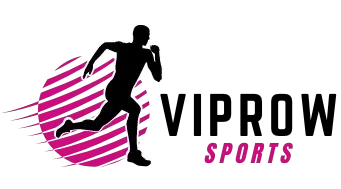Mastering the correct grip is the foundation for developing a consistent and powerful golf swing. It’s the first fundamental skill that every golfer must learn, as it sets the stage for proper hand and wrist action throughout the swing.
key things people should look out for:
- The Importance of the Grip
- Understand why the grip is the foundation for a consistent and powerful golf swing.
- Learn about the science behind how the grip impacts power transfer, club control, and swing mechanics.
- Appreciate the mental aspect of having a comfortable and secure grip for confidence and a clear mind during the swing.
- Grip Fundamentals
- Gain knowledge about the different grip styles (overlapping vs. interlocking) and when to use each.
- Understand the importance of proper grip pressure and hand positioning on the club.
- Learn about the concepts of neutral, strong, and weak grips and how they affect ball flight.
- Identifying and Correcting Grip Flaws
- Be able to recognize common grip flaws, such as grip being too strong/weak, hands positioned incorrectly, or improper grip pressure.
- Follow the step-by-step “grip check” process to evaluate their current grip.
- Implement specific drills and adjustments to correct any identified grip issues.
- Grip Types for Different Swing Styles
- Understand when to use a neutral grip for a straight ball flight.
- Learn how a stronger grip can help players who struggle with slicing the ball.
- Discover how a weaker grip can benefit players who tend to hook the ball excessively.
- Explore grip adjustments for shaping shots or navigating course conditions.
- The Grip’s Role in the Short Game
- Recognize the differences in grip for putting, chipping, and pitching shots.
- Understand the importance of a relaxed grip for putting and a firmer grip for chipping and pitching.
- Learn about choking down on the grip for enhanced control around the greens.
- Grip Evolution and Personalization
- Be open to adjusting and evolving their grip as their swing mechanics change over time.
- Explore personalized grip solutions, such as specialized grip sizes, materials, or textures.
- Understand the importance of experimentation and finding the grip that works best for their individual needs.
- Statistical Evidence
- Gain insight from statistical data highlighting the impact of a proper grip on accuracy, distance, greens in regulation, and injury prevention.
- Appreciate the quantifiable benefits of mastering the grip fundamentals.
Why Grip Matters
The Science Behind the Grip
The grip is the only connection between your body and the club, making it a critical element in transferring power and control to the clubhead. A proper grip promotes a stable and relaxed swing, allowing your hands, wrists, and arms to work in harmony. Conversely, an improper grip can lead to a host of swing flaws, including:
- Inconsistent ball-striking
- Loss of power and distance
- Hooking or slicing tendencies
- Increased risk of injury
The Mental Aspect
Beyond the physical mechanics, grip plays a significant role in your mental approach to the game. A comfortable and secure grip instills confidence, allowing you to swing freely without tension or second-guessing. When your grip feels natural and effortless, you can focus on the target and swing with a clear mind, which is essential for consistent performance.
Grip Fundamentals
Overlapping vs. Interlocking
In golf, two primary grip styles are commonly used: the overlapping grip and the interlocking grip. The overlapping grip is the most common, where the little finger of the trail hand rests between the index and middle fingers of the lead hand.
Both grips are viable options, and the choice often comes down to personal preference and hand size. Individuals with smaller hands might discover greater comfort with the interlocking grip, whereas those with larger hands may gravitate towards the overlapping grip.
Grip Pressure and Hand Position
Proper grip pressure is crucial for maintaining control and feel throughout the swing. The consensus among golf instructors is to grip the club with a firm but relaxed pressure, often compared to holding a small bird or a tube of toothpaste. Too tight of a grip can lead to tension and restricted arm and wrist movement, while too loose of a grip can cause the club to twist in your hands.
The position of your hands on the grip is equally important. For right-handed golfers, the left hand should be placed on the club first, with the thumb and forefinger forming a “V” that points towards the trail shoulder. The right hand should then be placed below the left, with the “V” formed by the thumb and forefinger pointing towards the right eye or chin.
Neutral vs. Strong vs. Weak Grips
The position of your hands on the club can also influence the grip’s strength or weakness. A neutral grip is achieved when the “V” formed by your lead hand points towards your trail shoulder. A strong grip occurs when the “V” points further towards your trailside, while a weak grip is when the “V” points towards the target side.
A neutral grip is generally recommended for most golfers, as it promotes a straight ball flight and reduces the likelihood of hooks or slices. However, some golfers may benefit from a slightly stronger or weaker grip to counteract their natural ball flight tendencies or swing characteristics.
Correcting Your Grip
Common Grip Flaws
Before attempting to correct your grip, it’s essential to identify any existing flaws. Here are some common grip issues that golfers may encounter:
- Grip too strong or too weak
- Hands positioned too high or too low on the grip
- Excessive or insufficient grip pressure
- Thumbs positioned incorrectly on the grip
The Grip Check
To evaluate your grip, follow these steps:
- Stand in your normal address position and hold the club as you would for a swing.
- Look down at your grip and check the position of your hands and thumbs.
- Observe the “V” formed by your lead hand and ensure it points towards your trail shoulder.
- Check your grip pressure by trying to slightly twist the club back and forth.
Grip Drills and Adjustments
If you’ve identified any issues with your grip, try these drills and adjustments:
- Grip pressure drill: Hold the club in your normal grip, then release and re-grip several times until it feels comfortable and secure.
- Hand positioning drill: Place your lead hand on the grip first, then adjust your trail hand until the “V” points towards your lead shoulder.
- Grip strength drill: Experiment with slightly stronger or weaker grips to find the position that promotes a consistent ball flight.
Remember, making grip changes may feel uncomfortable initially, but consistency and repetition will help ingrain the new grip pattern.
Grip Types for Different Swing Styles
Neutral Grip for Straight Ball Flight
As mentioned earlier, a neutral grip is generally recommended for most golfers as it promotes a straight ball flight. This grip is ideal for players with a neutral swing path and balanced swing mechanics.
Strong Grip for Slicers
If you struggle with a slice, a stronger grip can help counteract the over-the-top swing path that often causes this issue. By strengthening your grip, you encourage an in-to-out swing path, which can straighten out your ball flight.
Weak Grip for Hookers
Conversely, if you tend to hook the ball excessively, a weaker grip can help mitigate this issue. A weaker grip promotes an out-to-in swing path, which can counteract the excessive inside-out motion that causes hooks.
Grip Adjustments for Different Shot Shapes
While it’s generally advisable to maintain a consistent grip throughout your swing, some golfers may benefit from making slight grip adjustments to shape shots or navigate challenging course conditions. For example, strengthening your grip slightly can help you hit a controlled fade while weakening it can promote a draw.
The Role of Grip in the Short Game
Putting Grip
The grip for putting is slightly different from the full-swing grip. Most instructors recommend a more relaxed grip pressure, with the thumbs resting lightly on the grip and the fingers providing minimal tension. This promotes a smooth, pendulum-like stroke and enhances the feel and touch around the greens.
Chipping and Pitching Grip
For chipping and pitching shots, a firm but not overly tight grip is recommended. This allows for a controlled wrist action while still maintaining a relaxed swing. Many golfers prefer to choke down slightly on the grip for added control and consistency on these delicate shots.
Grip Evolution and Personalization
Grip Adjustments Over Time
As you progress in your golf journey, your grip may evolve and require adjustments. Changes in strength, flexibility, or swing mechanics can necessitate grip modifications to maintain optimal performance. It’s essential to remain open-minded and adaptable, as a grip that worked well in the past may need fine-tuning as your game evolves.
Personalized Grip Solutions
While there are general guidelines for grip fundamentals, every golfer is unique in terms of hand size, strength, and swing characteristics. Don’t be afraid to experiment and personalize your grip to find the solution that works best for your individual needs. Some golfers may benefit from specialized grip sizes, materials, or textures to enhance comfort and control.
Statistical Evidence of Grip’s Impact
Proximity to the Hole
According to data from Arccos Golf, golfers who maintain a consistent grip and swing path hit greens in regulation at a significantly higher rate than those with inconsistent grips. This translates to shorter approach shots and better scoring opportunities.
Accuracy and Distance
A study by TrackMan, a leading golf data analysis company, found that golfers with proper grip mechanics consistently hit straighter and longer shots than those with improper grips. The data showed an average increase of 10-15 yards in driving distance and a 25% reduction in off-line shots for players with correct grip fundamentals.
Injury Prevention
Improper grip can also contribute to an increased risk of injury. A study by the American Journal of Sports Medicine reported that golfers with excessive grip tension were more prone to developing wrist, elbow, and shoulder injuries due to the strain and repetitive motions associated with an incorrect grip.
Additional Tips
- Grip Pressure
- Find the right balance between a firm and relaxed grip pressure
- Grip the club like you’re holding a small bird or a tube of toothpaste
- Avoid gripping too tightly, as it can lead to tension and restricted movement
- Perform the “grip pressure drill” by gripping, releasing, and re-gripping the club until you find the right pressure
- Hand Positioning
- For right-handed golfers, place the left hand on the club first, with the thumb pointing down the center of the shaft
- The “V” formed between the thumb and forefinger of the left hand should point toward the right shoulder
- Position the right hand below the left, with the “V” pointing towards the right eye or chin
- Ensure your hands are not too high or too low on the grip, as this can affect wrist hinge and clubhead control
- Grip Style
- Experiment with both the overlapping and interlocking grip styles
- Choose the grip style that feels most comfortable and natural for your hand size and preference
- Grip Strength
- Assess your natural ball flight tendencies (hooks, slices, or straight)
- If you struggle with slices, try a slightly stronger grip by rotating your hands slightly toward your trailing side
- If you tend to hook the ball, try a weaker grip by rotating your hands toward the target
- Experiment with different grip strengths to find the optimal position for your swing
- Short Game Grip
- For putting, use a lighter grip pressure with the thumbs resting lightly on the grip
- For chipping and pitching, maintain a firm but not overly tight grip
- Consider choking down slightly on the grip for added control and consistency on delicate shots around the green
- Grip Aids and Training Tools
- Use grip training aids like alignment sticks or grip guides to ensure proper hand positioning
- Practice swinging with a grip-strengthening tool or a weighted club to build grip strength and endurance
- Consider using specialized golf grips with textures, patterns, or materials that enhance your comfort and control
- Personalization and Adjustments
- Don’t be afraid to personalize your grip to suit your individual needs and preferences
- As your swing mechanics evolve, be open to making adjustments to your grip to maintain optimal performance
- Seek guidance from a qualified golf instructor or professional fitter to ensure your grip is tailored to your swing and physical characteristics
- Mental Approach
- Develop confidence in your grip by practicing it consistently and ingraining the proper feel
- Visualize your desired ball flight and trust your grip to produce that outcome
- Maintain a relaxed and confident mindset throughout your swing, as tension in the grip can negatively impact your performance
Remember, perfecting your grip is an ongoing process that requires patience, practice, and a willingness to experiment. By following these tips and remaining dedicated to improving your grip fundamentals, you’ll be well on your way to playing like a master and unlocking your full potential on the golf course.
Final Thoughts
Mastering the correct grip is the first step towards unlocking your full potential as a golfer. It’s the foundation upon which all other swing mechanics are built, and its impact on accuracy, power, and consistency cannot be overstated.
Remember, perfecting your grip may take time and patience, but the rewards are well worth the effort. A comfortable and secure grip will not only improve your ball-striking but also instill confidence and enjoyment in your game.


